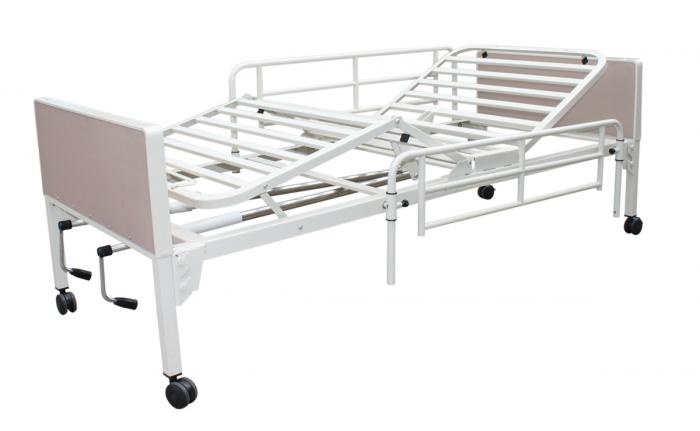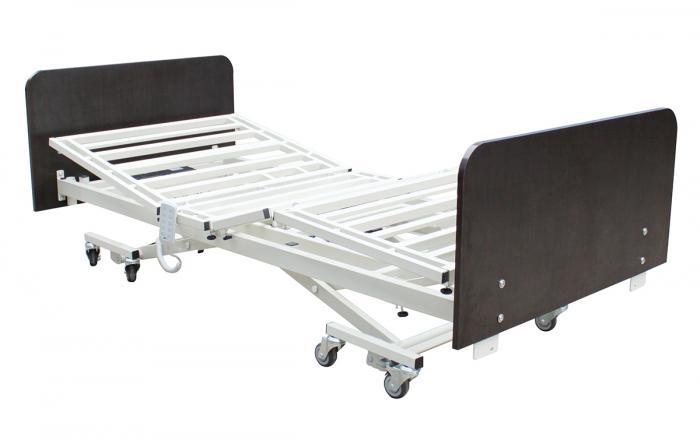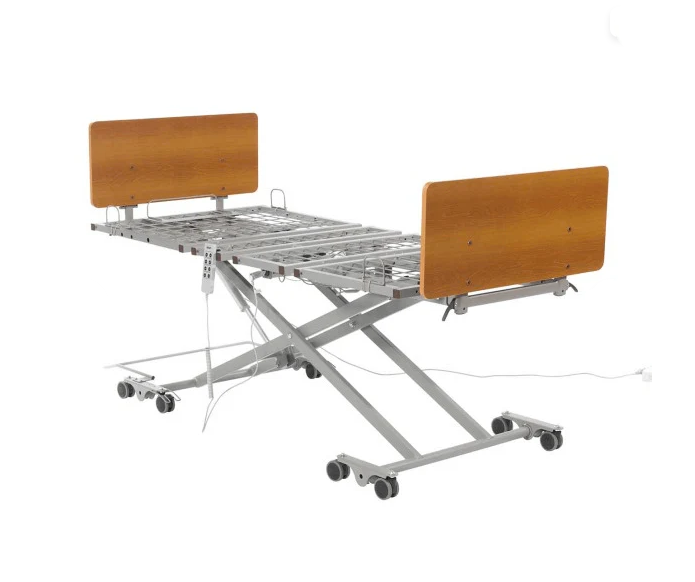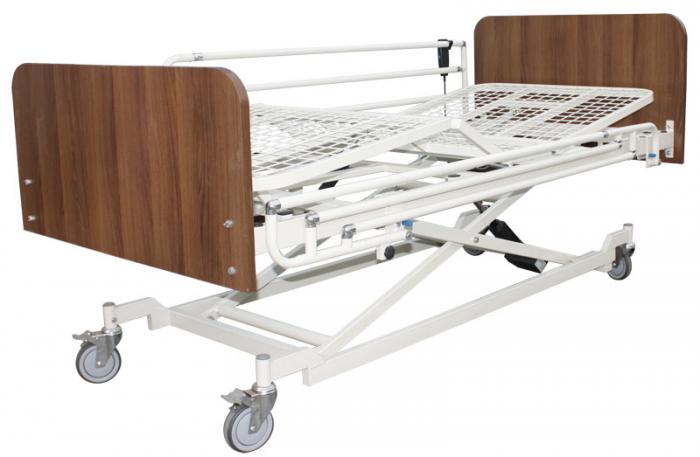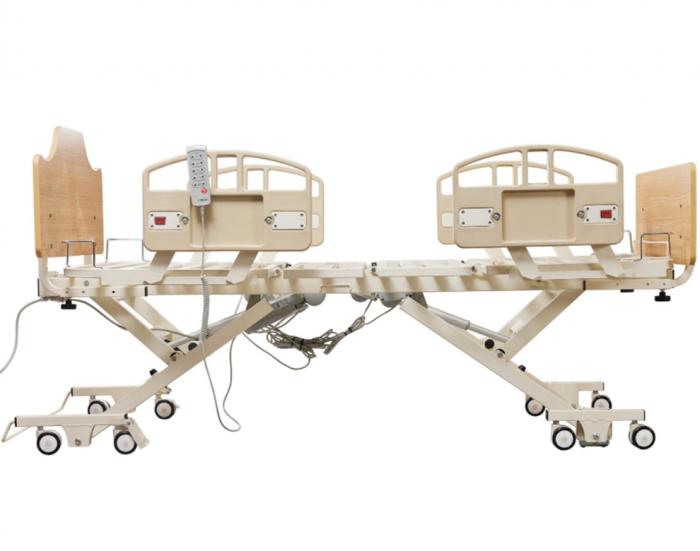| Name: | Nursing Home Bed |
|---|---|
| Model No.: | BES-HB034 |
| Product Name: | Nursing Home Bed |
| Brand: | BESCO |
| Keywords: | Nursing Home Beds,Nursing Home Care Beds,Nursing Hospital Beds |
| MOQ: | 15 units |
| Sample: | Available |
| LEAD TIME: | 30 DAYS |
| Payment Term: | T/T in advance |
| Country of Original: | China |
| Weight Capacity: | 200 kgs |
| Port of Loading: | Jiangmen |
| Frame Material: | Steel |
| Office: | China |
Products Description
Nursing Home Bed with Two Functions
Function:
Back-rest tilting is 0~70º. Knee-rest tilting is 0~45º.
Standard accessory:
2 pcs of 3"total lock brake castors,2 pcs of 3" swivel castors,Rectangular tube bed plate,self-protected metel crank system.
Optional:
Side rails,lifting pole.
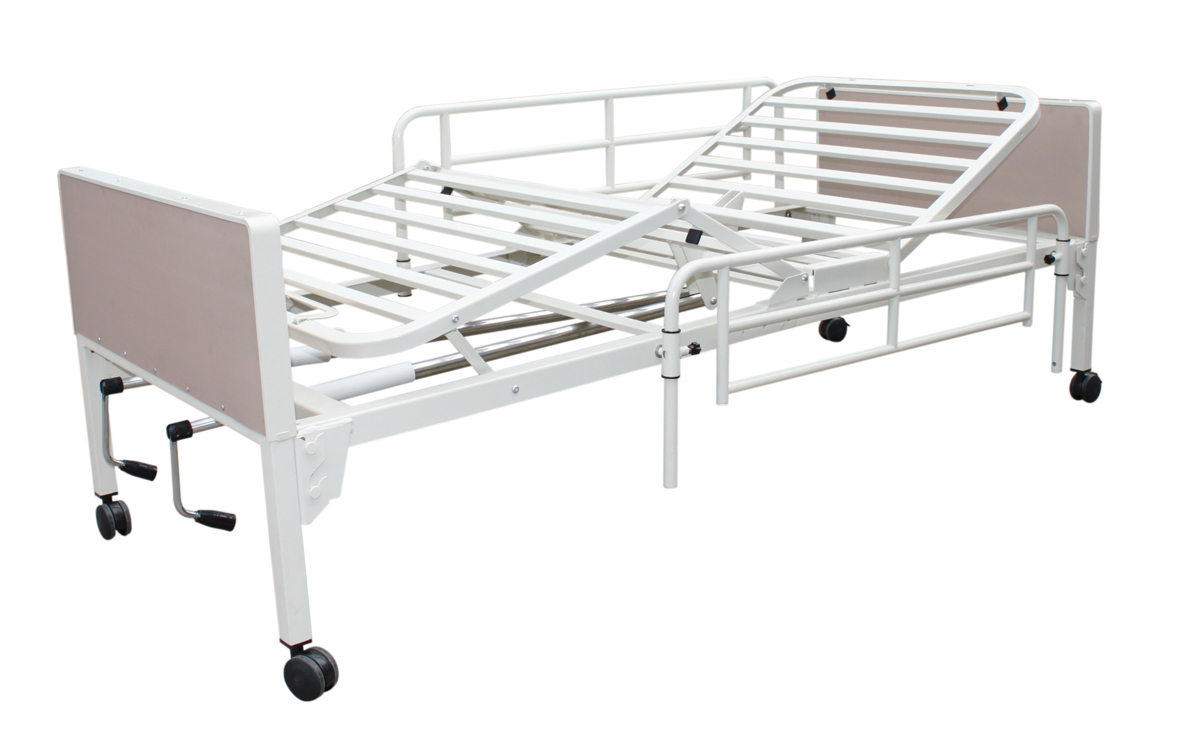
| Dimension | L2240*W900*H525 |
| Material | steel framework, wooden bed board |
| Backrest adjustment angle | 0-70º |
| Legrest adjustment angle | 0-45º |
Other Homecare Bed:
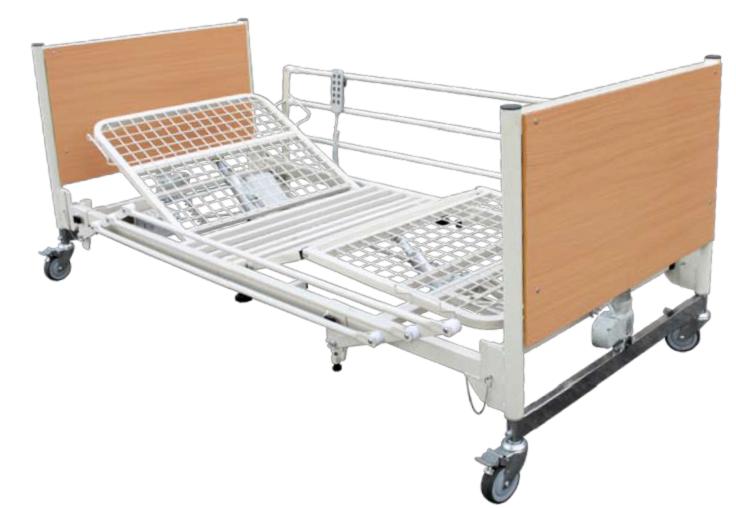
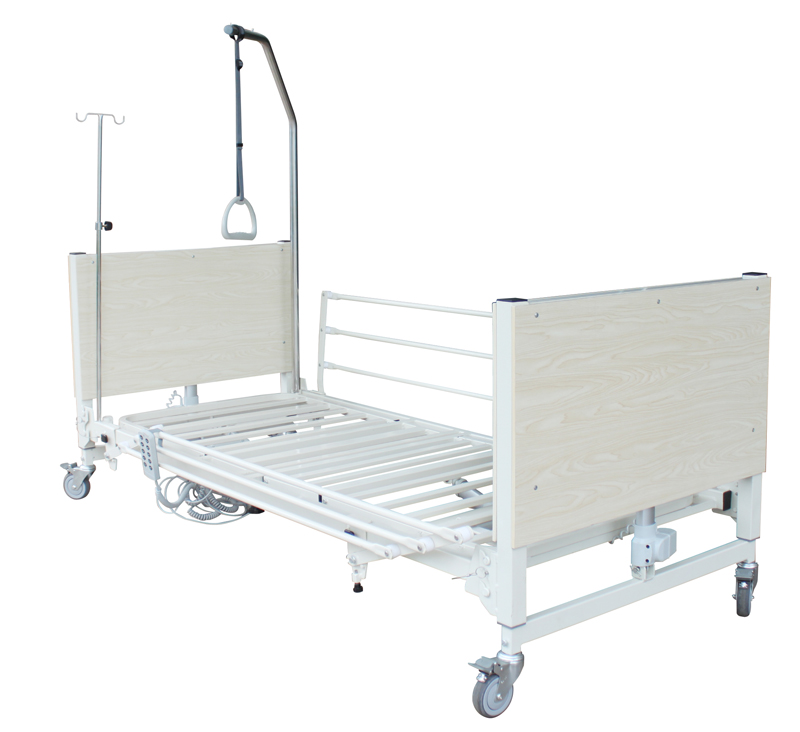
A nursing home bed is a specialized medical bed designed for long-term care, focusing on patient safety, comfort, and ease of use for caregivers. Unlike standard hospital beds, nursing home beds often feature high/low height adjustments, advanced safety features like low-profile entry, and various electric or manual controls to adjust the head, foot, and knee sections.
Key features of nursing home beds
High/low adjustment: Allows the bed to be raised or lowered to different heights, improving caregiver ergonomics and patient safety.
Low floor position: A key safety feature that minimizes the risk of injury from falls by lowering the bed to near floor level.
Adjustable sections: Electric or manual controls for the head, foot, and knee sections to improve patient comfort and support.
Knee break: This function raises the thigh angle to provide a more natural sitting position and prevent the user from sliding down the bed.
Safety features: Includes side rails (optional or standard), safety locks, and wall bumpers to prevent falls and ensure the bed remains secure.
Anti-shear design: Some advanced models have an anti-shear head deck adjustment that raises the knee deck before the head deck to minimize patient slippage.
Customization: Can be customized with a variety of accessories like overbed tables, mattresses, and assist bars.
Types of nursing home beds
Manual: Adjustments are made using hand cranks.
Semi-electric: Features electric controls for the head and foot sections, while the bed height is adjusted manually with a hand crank.
Fully electric: All adjustments, including height, are controlled with an electric motor and a hand-held remote.
To use a nursing home bed safely, keep the wheels locked at all times except when moving the bed. Use the hand control to adjust the head and foot sections as needed, and ensure the control is always within the user's easy reach. Keep side rails up when the person is in bed and not getting up to prevent falls. For accessibility, keep a phone, bell, and nightlight within reach.
Safety and accessibility
Lock the wheels: Keep the wheels locked at all times to prevent the bed from rolling. Unlock them only when you need to move the bed, and re-lock them once in the new position.
Keep the call button/bell and phone close: Place a bell and a phone within easy reach so the resident can call for help whenever needed.
Use side rails: Keep side rails up at all times except when the person is getting in or out of bed to prevent falls.
Ensure proper lighting: Use nightlights to help prevent falls during the night.
Adjust bed height for caregivers: Raise the bed to a comfortable height (around hip or waist level) for caregivers to assist the resident without straining their back.
Adjusting the bed
Use the hand control: The hand control allows you to raise and lower the head and foot of the bed.
Adjust the head: Use the "head up" button to raise the head and the "head down" button to lower it.
Adjust the feet: Use the "foot up" button to raise the feet and the "foot down" button to lower them.
Use the "chair" position: Some beds have a "chair" position that helps the resident sit up for activities like eating or watching TV.
Consider a "pocket": When raising both the head and knees, the resulting pocket can prevent the resident from sliding down the bed.
For caregivers
Position yourself correctly: Always ensure you are in a safe and ergonomic position before assisting the resident.
Be aware of bed functions: Check the manual or the manufacturer's instructions for specific features, like pressure-reducing surfaces or bed exit alarms.
Monitor the resident: Keep a close eye on the resident and address their needs promptly.
